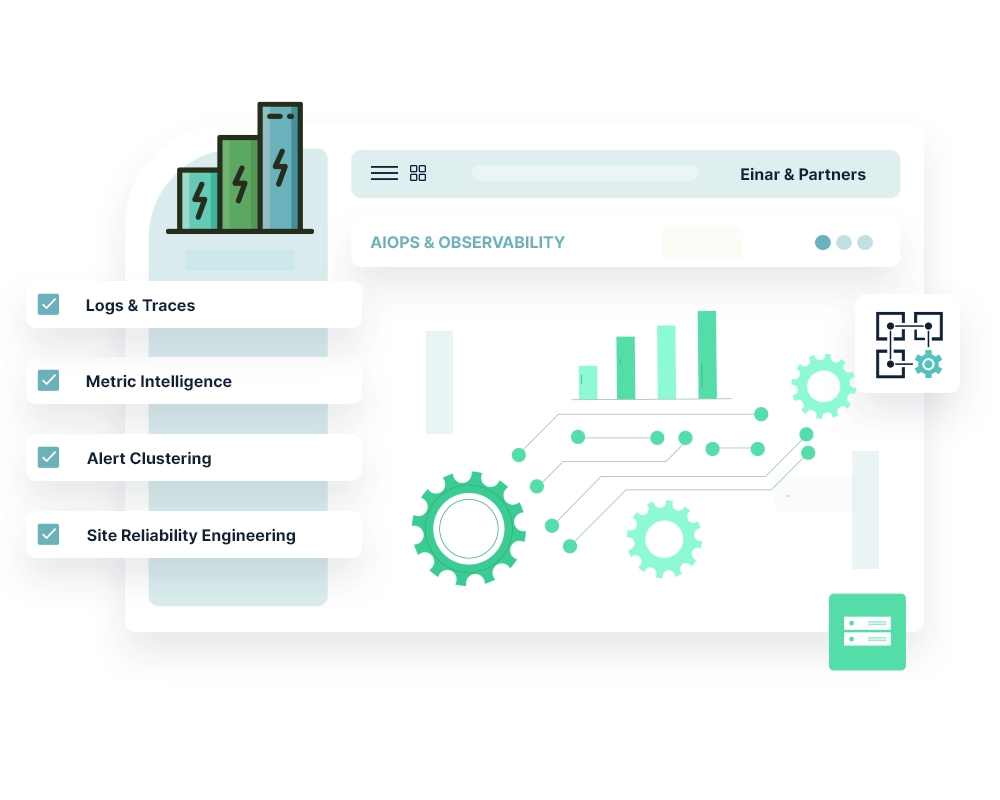AIOps & Observability
Moving from proactive to predictive is possible. The ultimate state of an ITOM implementation for many is the holy grail of AIOps – AI for IT Operations. Being able to predict outages before they occur, work more smart with AI in monitoring teams, as well as automating root cause analysis and remediation is where the industry is heading.
AIOps & Observability is a complex area, where many companies have a scattered landscape of monitoring tools, metrics and logs. Many organizations make the mistake thinking that AIOps and Observability projects are mostly technically oriented sprinkled with a bit of Machine Learning. Truth is, it’s more about culture than technology.
Moving the IT department to observe states rather than simple alerts, to work with anomalies and predictions rather than reactive incidents – as well as seeing what the real business impact of an outage is a challenge. But most of the time, the challenge is not just in technology as much as it is in culture.
At Einar & Partners, we’ve pioneered and helped organizations to move from siloed ways of working to instead rely on AIOps for service delivery & IT.
